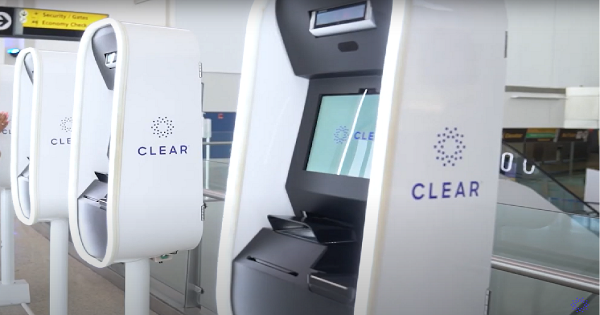U.S. Customs and Border Protection (CBP) is to begin a pilot to collect biometric and biographic information from certain aliens who are departing the United States on selected flights from up to ten identified U.S. airports.
Called Biometric Exit Mobile Air Test,the pilot will last for about a year and will not apply to U.S. citizens.
The BE-Mobile Air Test will start at Hartsfield-Jackson Atlanta International (ATL) and expand to nine more airports later in 2015. The nine airports are:
- Los Angeles (LAX)
- San Francisco (SFO)
- Miami (MIA)
- Chicago O’Hare (ORD)
- Newark Liberty (EWR)
- John F. Kennedy (JFK)
- Dallas Fort Worth (DFW)
- George Bush Intercontinental (IAH)
- Washington Dulles (IAD)
The CBP says its BE-Mobile Air Test is designed to test two things:
- a new biometric exit concept of operations
- CBP’s outbound enforcement policies and workforce distribution procedures
The biometric exit concept will see CBP officers using a wireless handheld device at the departure gate to collect biometric and biographic data.
How it works
Currently, most foreigners (aliens) have their fingerprint and photographic biometric captured on entry into the US.
The BE-Mobile Air Test will be conducted at the identified airports on pre-selected outbound international flights. Flights will be pre-selected on a random basis or chosen to correspond with existing outbound enforcement operations.
CBP officers will be at the departure gate for the selected flights where they will review the passenger’s travel document (passport, visa, lawful permanent resident card, or other qualifying travel document) to determine if the passenger is required to submit biometric information at the time of departure.
If so, the CBP officers will obtain biographic data from these select aliens by swiping or inputting the information from the alien’s travel document on a wireless handheld device.
The biometric data collected upon departure will be compared with the data collected upon the passenger’s entry into the country, and then stored in a database operated by the Department of Homeland Security (DHS).
The CBP officer will also capture two of the alien’s fingerprints and verify the fingerprints against the alien’s biometric identity record.
Based on the results of the verification or additional law enforcement information, the officer may then perform additional analysis or conduct a further interview to determine if additional action may be appropriate.
When the departure inspection is complete, the results of the transaction will be recorded in a DHS biometric database and a CBP biographic database in real-time.
By collecting biometric data upon departure, CBP says it will be able to more effectively confirm the identity of any foreign national entering and exiting the country, as well as track and record the exit of temporary visitors to the US.
N.B. Image credit:







